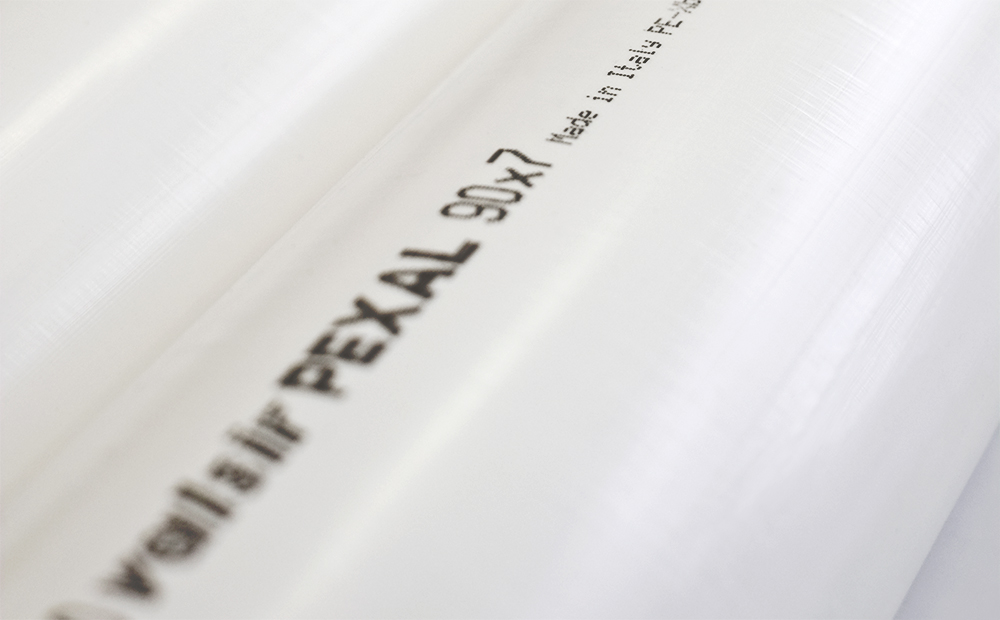Infections from Legionella are marking an increase all over the world due to the frequent contamination of water sources where the bacteria hides and the difficulties in keeping it under control with adequate environmental prevention.
Legionella bacteria live in natural aquatic environments such as lakes and rivers, thermal springs and groundwater; they prefer waters at a temperature between 25-42°C, but can survive between 6-63°C.
There are 67 species of bacteria that belong to the genus Legionella, and about half have been associated with disease in humans. They move from natural environments to the plumbing systems in buildings, colonising large structures with centralised and extensive systems of hot water distribution, such as hospital, hotels, sports facilities, spas, condominiums and nursing homes, and carry a potential risk for human health. Among the most favourable conditions for the proliferation of Legionella are stagnation and blockage, encrustation, dead legs and couplings, and the presence of storage tanks.

The most severe form of infection is acute pneumonia, with onset after 2-10 days from exposure; it can be treated with antibiotics. Those with the highest risk are the elderly, men, heavy smokers, those who consume alcohol, those with chronic illness (pulmonary, cardiovascular, kidney and diabetes) or with immunodeficiencies due to surgeries and treatments (e.g., organ transplants, steroid and anti-tumour treatments).
The disease is not contagious, so it does not spread from person to person. It is not contracted by drinking water, but rather by inhaling the contaminated aerosol generated by showers, taps, whirlpools, saunas, cooling towers, fountains, irrigation systems, etc.
It is difficult to eradicate the germ in a contaminated water system, but with suitable measures of control implemented by the managers of the water systems, contamination can be kept under control.
The overview and precautions to take
This year the European Centre for Disease Prevention and Control (ECDC) published data on cases of Legionella recorded in 2020. Pulmonary infection affected over 80,000 people. Over 70% of cases were in Italy, France, Spain and Germany, so it is worth opening a discussion on the measures to combat the problem.
The best approach to minimise the risk of Legionella contamination is prevention, through a Risk Assessment Document.
The focus of this article is naturally on prevention, examining both the most efficient disinfection treatments available, and the critical design choices to minimise risks.
As we said, the Legionella bacteria favours aquatic habitats (artificial and non-artificial) that are warm and stagnant: the first factors to intervene with are therefore temperature and water circulation. In the plumbing and heating area, the systems with these characteristics are cooling towers, air treatment systems and plumbing systems present in almost every building.
The riskiest temperature range with the maximum proliferation of bacteria is approximately 25-50°C: a first preventive measure is the correct spacing and insulation of hot and cold water circuits.
The importance of making correct technological choices
Some indications on the minimum thickness that pipes must have are provided by the Italian Presidential Decree D.P.R. 412/93: as for the materials to use, the clear choice is for multilayer systems.
Pexal and Mixal are two ranges of pre-insulated pipes that offer exceptional performance: in multilayer solutions the thermal conductivity is definitely lower than that of metal pipes and in line with plastic pipes.

When it comes to stagnant water (dead legs and unused branches serving utilities), the goal is achieved by reducing to the minimum the preparations for future expansion of the system and by preventing a distribution inside closed mesh environments, also known as “ring” distribution.
This type of circuit is mainly used in sanitary and hotel environments as they reduce water stagnation, even in rarely used utilities. Practically speaking, the utilities are connected to the same piping by special “U” fittings, which serve to prevent water stagnation. This solution creates a ring that ensures the continuous flow of water contained in the circuit even if only one utility is used, regardless of which one it is.
The fittings to create the recirculation network are available in brass (Pexal Brass) and in plastic (Bravopress and PexalEasy) in order to resist the main anti-legionella treatments (the so-called shock treatments), which can be physical – based on disinfection at a high temperature – or chemical (e.g., hyperchlorination).
Apart from the design choice, it is essential that the interventions are not limited to the reclamation of the contaminated system: contrarily, it is essential that the disinfection treatments are programmed through a Risk Assessment Document.
 Italiano
Italiano
 English
English
 Deutsch
Deutsch
 Français
Français
 Español
Español
 Greek
Greek